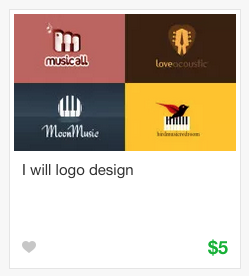There is a market for spec work. This is the big elephant in the room that seems not being considered in any discussion around spec work. There’s market, and nobody can’t do much about it. That market is composed by a whole set of people with different needs:
- No understanding of what design is and its benefits
- No budget, which often goes hand in hand with the point above
- Their need is small so it’s enough what they can get
This group of people and companies is often what makes the worst clients as well. It’s the group that makes up the bulk of the horror stories we all know. Sure, there are exceptions, but overall these are clients no designer wants.
We can also say that we should educate them, make them perceive the value, engage them. This is all good, I try to do this as much as possible, and we should be doing more of this. But the underlying statement stays: there’s a multitude of people out there and it’s unlikely we’ll make all of them understand the value, and even if that would be possible, in some cases something quick and cheap is exactly the right thing.
In short, this market is outlined by two things: cheap price and low quality.
This is a reality that can’t be ignored.
Cheap Price, Low Quality? Spec Work!
Once we acknowledge that, we now see that this is a market where spec work, as bad as it is, thrives.
Work done for free, in hopes of getting paid for it
Source: AIGA position on spec work
Platforms like 99designs (2008) or Crowdspring (2007), just to mention the two biggest ones, thrive too. They have covered that market by reaching people that are willing to do that for cheap (or nothing at all). Similar platforms are also appearing to offer the same in other fields, for example Cocontest (2012) for architecture.
These platforms hide themselves behind two words trying to not being blamed under the “spec work” issue.
- Spec work can hide behind the label of “competition”, which makes the boundaries even harder to find. When spec work doesn’t lead to hiring but just a monetary prize, it’s can be seen as similar to a competition. The difference in general terms is that you would participate to a competition even if there was no monetary prize (some competitions even have a fee to join) while you wouldn’t do the same for spec work. At the same time, competitions usually don’t provide a complete end product, or if there is, it’s something that can’t be used “as is” or taken away from the creator (either in terms of license or practicality).
- Spec work can hide behind the label of “crowdsourcing”, which is already a difficult term, since sometimes is just used to hide realities of unskilled labor. Good crowdsourcing instead is usually more close to volunteering— so very far from a monetary prize.
The thing is that these platforms present themselves as innovative, as marketplaces, as new ways of doing business, as efficient. “Great business starts with a great logo”, “Dozens of talented participants” , “The best way to design” they all claim, in one form of another (these are sentences taken directly from the sites).
In short, they lie.
To be clear: there’s no problem in working in the cheap price and low quality market. The problem is that they do that by promising to both ends (clients and designer) something that isn’t true, if not by pure luck.
Is it the only way?
Of course, these platforms aren’t the only possible approach. They use a push approach: they ask for people to work for them for free, and then they pick the preferred one. To create enough traction for that push approach to work, they have to lie. It’s inherent in the model.
However, that market could be addressed without lying by using a pull approach. Fiverrr is a great example of this. Every professional there offers a base service for five dollars. You can get anything from a website to a logo to a jingle to a voiceover and so on. The offer is crisp clear, the price is crisp clear. And then you can buy more, but everything starts from five dollars.

This is the big difference between the two approaches: by using the push approach companies are under pressure to lie in order to promise higher quality than what they can deliver and low prices, and on top of that they make people work for free. The workload is shifted to the people looking for a job, the ones usually in the weaker position.
The pull approach instead is a normal marketplace where people offer services and others buy it. Crystal clear. No spec work. The same market is addressed. And while you can lie in your presentation, it’s already clear what kind of result you’re going to get, to an extent. Individuals can lie, sure, but the platform as a whole now has an interest in avoiding that, instead of the other way around.
One may ask: why do both approaches exist, if one is clearly better? The reason is simple: both approaches are normally practiced by people, every day. And this again, is something that can’t really be solved. People will keep asking others to work for cheap, and don’t get the value of quality.
Fighting them directly is pointless. The market is there.
With this I don’t mean to admit defeat: I mean to not get angry at them or ask for regulation. The best way to approach the problem is to show people the value of our work, help young designer to avoid the trap, differentiate spec-work from good work, and even build alternative systems like Fiverrr.
In other words: pushing for better solution instead of pushing back the bad ones.